Angela Grauerholz
All images by and courtesy of artist.
And concerning the number of books, the establishment of libraries, and the collection in the Hall of the Muses, why need I even speak, since they are all in men’s memories?
-Athenaeus of Naukratis, [Comments on the destruction of the Great Library of Alexandria], Deipnosophistae, 90 AD
Last autumn, the National and University Library of Kosovo [sponsored by the Kosovo Foundation for an Open Society], conducted its own survey and found that two-thirds of Kosovo’s 180 libraries had been “annihilated” between 1990 and 1999. Over 900,000 books — or almost half of all library books in Kosovo — had been destroyed. What has actually happened is that all ethnic Albanian material in Kosovo were removed from the libraries or fired or sacked about 10 years ago, and that no new books in the Albanian language have been acquired since 1991. And in this sense you might speak of ethnic cleansing in the libraries.
-Carsten Frederiksen, [Deputy Director of the Library Federation], Rebuilding Libraries in Kosovo, March 02, 2001.
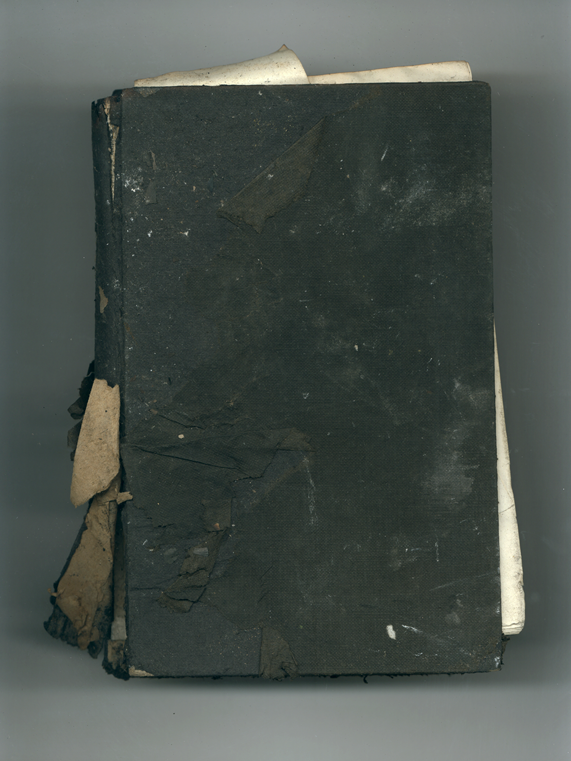
Black Book no 7(2) front, 2001, Ink jet print (Giclée) on Arches paper. 45 x 36.5 inches.
This project developed out of an event that my husband and I experienced in 1999, when, as a consequence of a fire in our home, we lost almost our entire library, which represented some twenty-five years of collecting. The physical evidence of this loss—the remnants of books rendered unusable—for me, has come to embody privation, made visible.
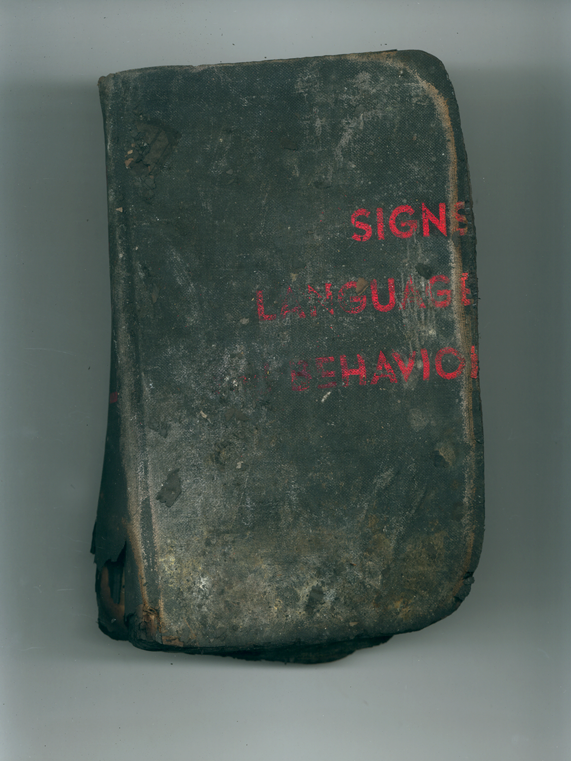
Black Book no 55 front, 2001, Ink jet print (Giclée) on Arches paper. 45 x 36.5 inches.
Inevitably, the images of the charred remains of books remind us of those libraries destroyed by fire, war and cultural hatred; from the burning of the Great Library of Alexandria by Julius Caesar in 47–48 BC, and the Nazi-instigated burning of ‘degenerate literature’ on the night of Thursday, March 16, 1937 in Nuremburg, to the present day ‘ethnic cleansing’ of all the libraries in Kosovo. These calamitous tragedies have forever erased histories, knowledge and identities, both personal and cultural.
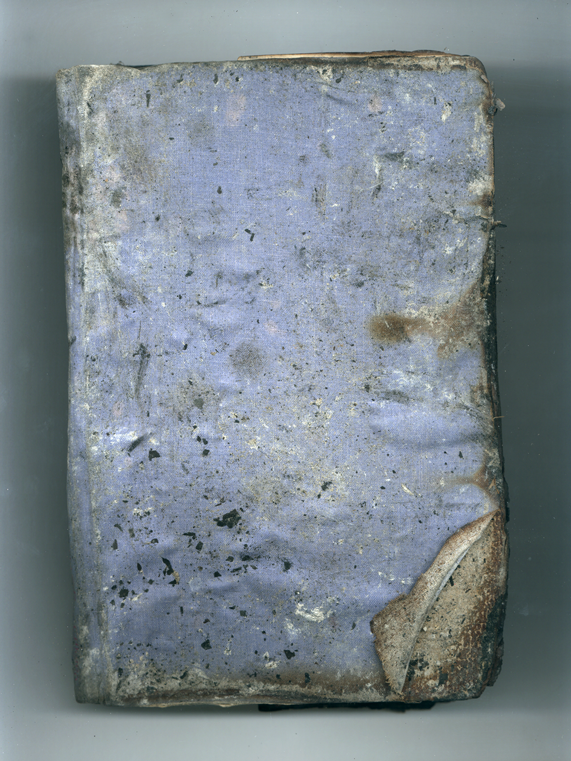
Blue Book no 6 back, 2001, Ink jet print (Giclée) on Arches paper. 45 x 36.5 inches.
For the project Privation, I have scanned the front, and back covers of a number of books damaged by the fire, leaving their content either hidden from view, or, at times, only alluded to through a title, a word, or part of an image. Using the scanner as camera, one copy of the resulting 75 images of book covers were printed digitally onto Arches paper. In addition, an artist’s book based on the premise that each page, or each sheet of paper in the book replaces a burnt book [each page shows the front cover on one side and the back cover on the other (back) side] was printed and bound as an edition of 15 copies.
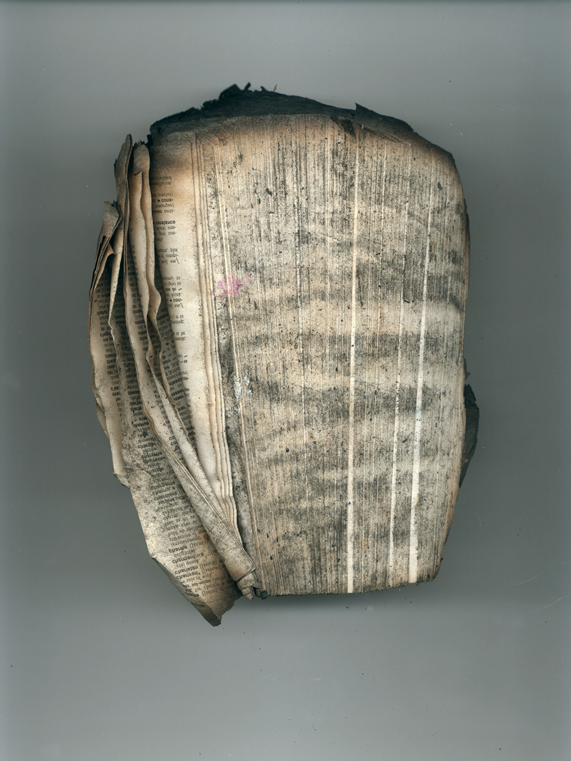
Book no 29 front, 2001, Ink jet print (Giclée) on Arches paper. 45 x 36.5 inches.
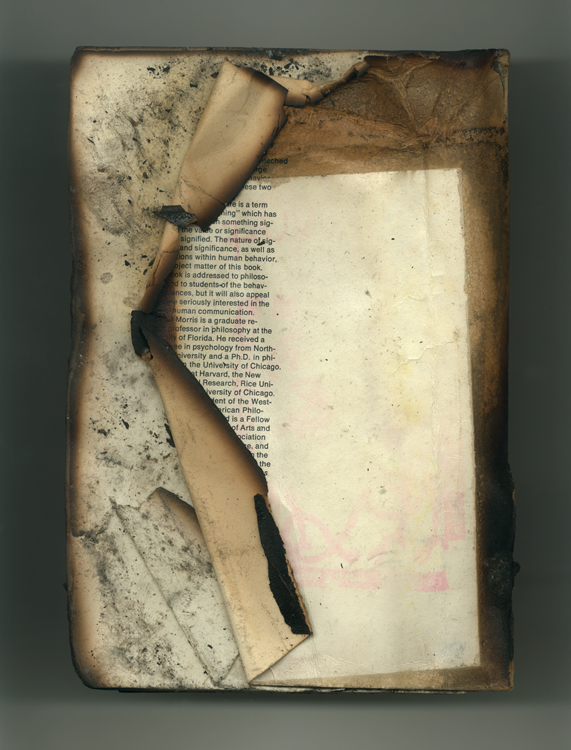
Folded Book no 145 back, 2001, Ink jet print (Giclée) on Arches paper. 45 x 36.5 inches.
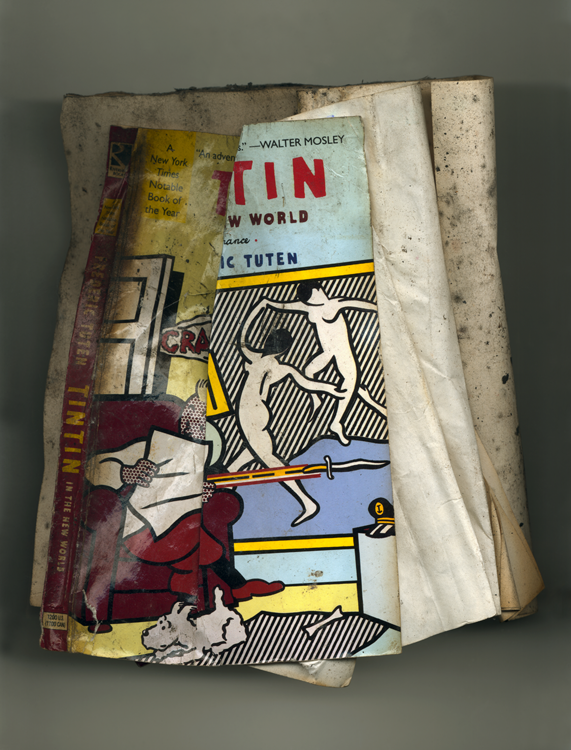
Image Book no 237 front, 2001, Ink jet print (Giclée) on Arches paper. 45 x 36.5 inches.
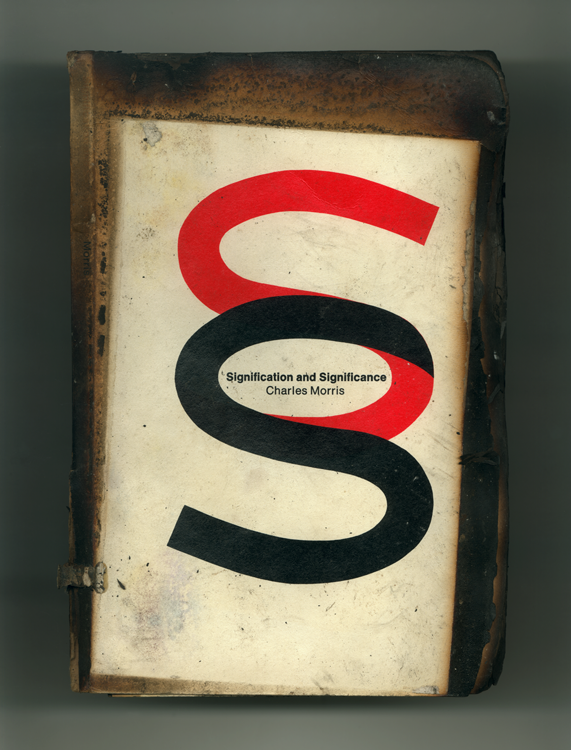
Logo Book no 145 front, 2001, Ink jet print (Giclée) on Arches paper. 45 x 36.5 inches.
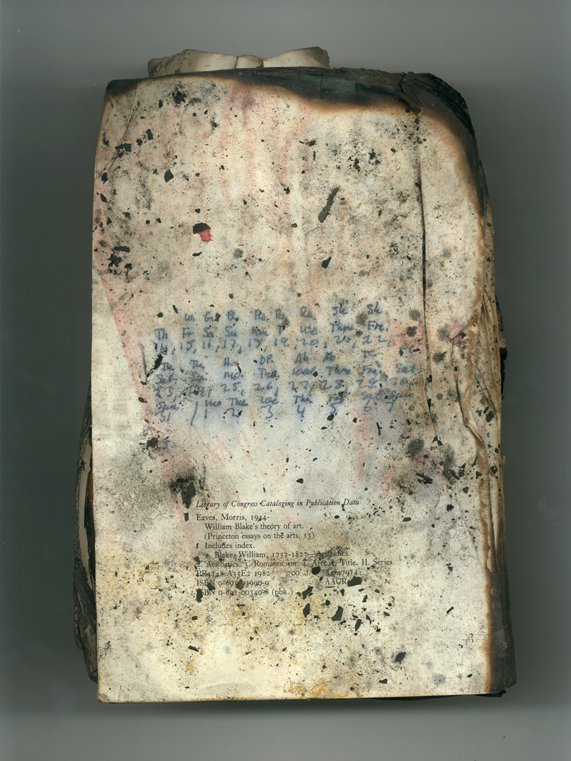
White Book no 44 back, 2001, Ink jet print (Giclée) on Arches paper. 45 x 36.5 inches.
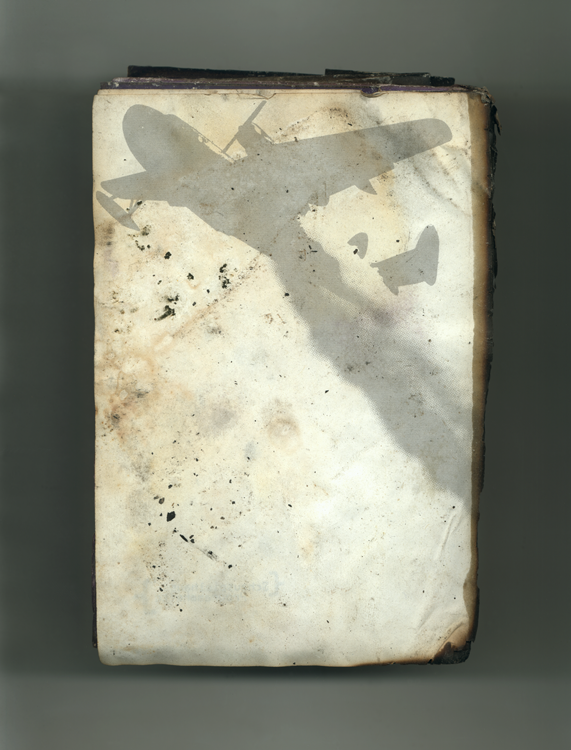
White Book no 45 back, 2001, Ink jet print (Giclée) on Arches paper. 45 x 36.5 inches.
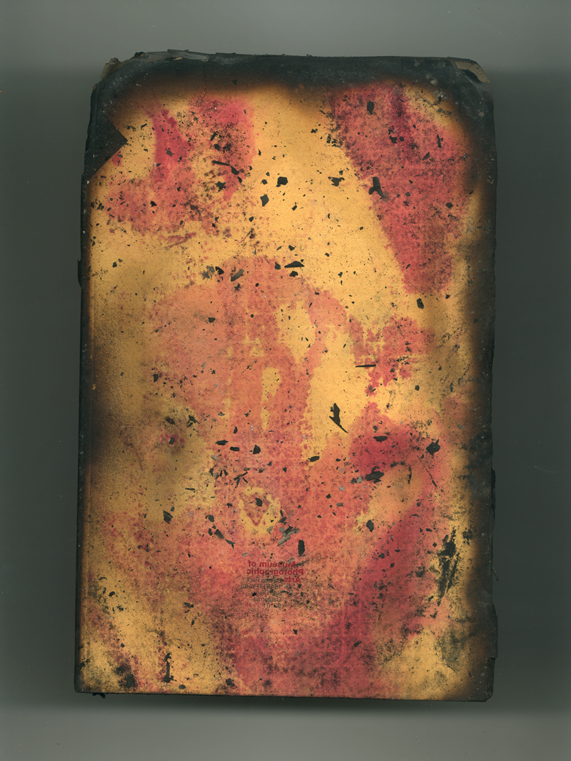
Yellow + Red Book no 147 back, 2001, Ink jet print (Giclée) on Arches paper. 45 x 36.5 inches.
Angela Grauerholz graduated with a degree in graphic design from the Kunstschule Alsterdamm and studied literature and linguistics at the University of Hamburg. She holds an MA in photography from Concordia University. Co-founder of ARTEXTE, she has also worked as a graphic designer, and since 1988, has taught design at the Université du Québec à Montréal, where she was the director of the Centre de design from 2008-12. Born in Hamburg, Germany, she has lived and worked in Montréal since 1976. Her photographic work has been acclaimed, exhibited and collected in Canada and abroad. She has been featured in important international events such as documenta IX in Kassel, Germany, the Sydney Biennale, Australia, and the Carnegie International in Pittsburgh. In 2009, VOX, the centre for the contemporary image, launched her web work www.atworkandplay.ca. In 2010 the National Gallery of Canada presented a retrospective of her work. She received the prestigious Paul-Émile-Borduas Prize from Quebec in 2006, and in 2014 the Governor General Award in Visual and Media. angelagrauerholz.com